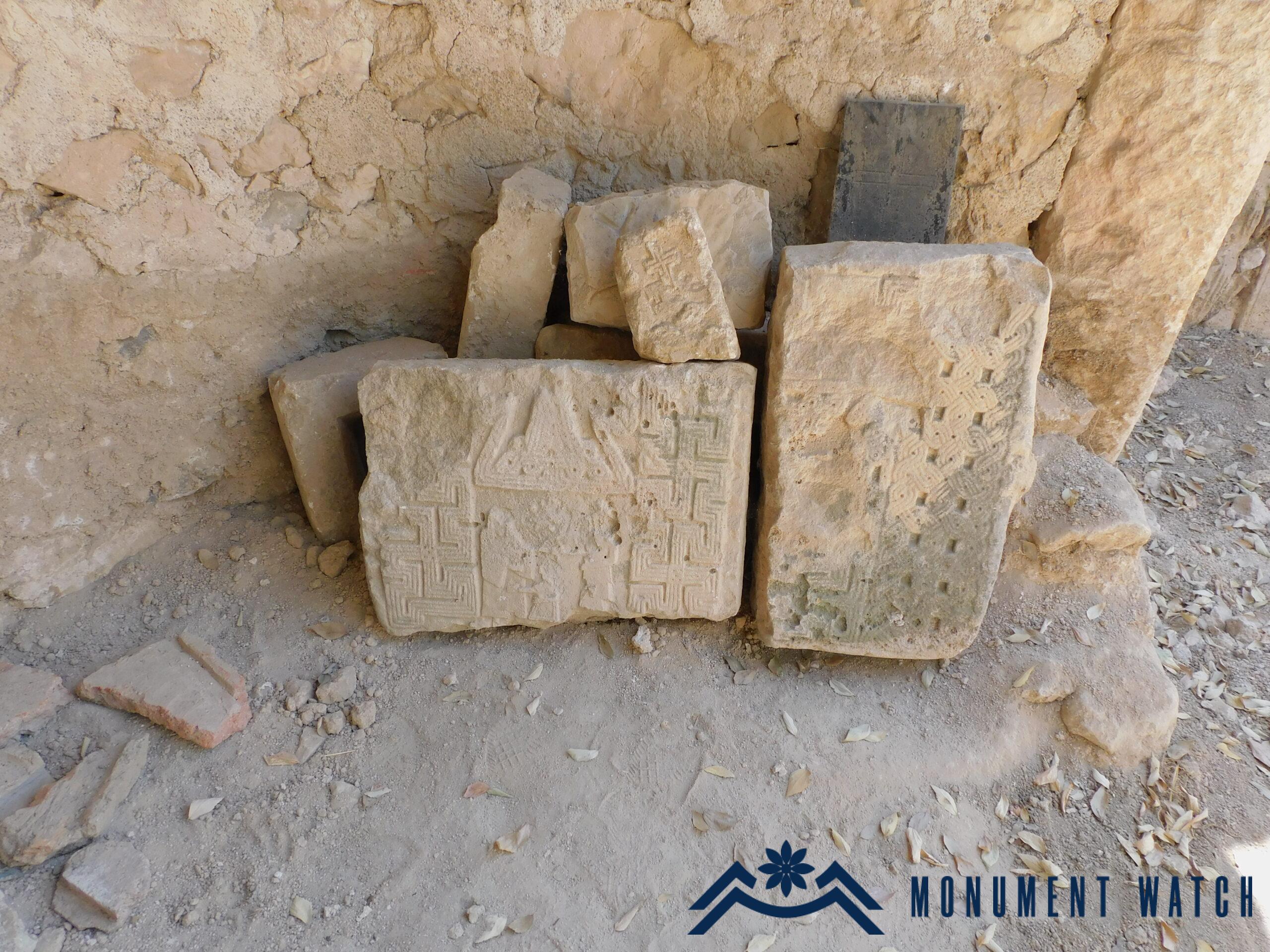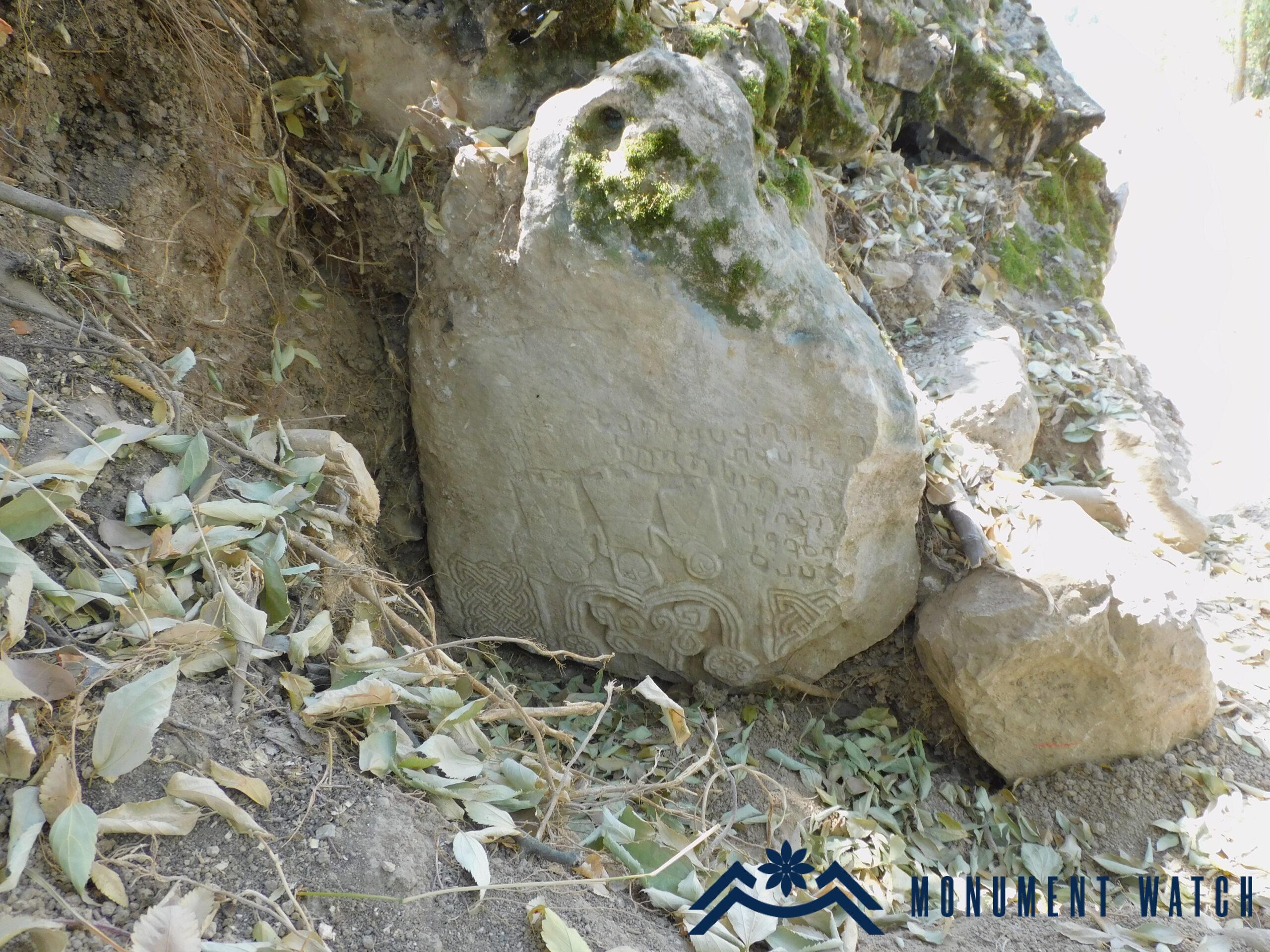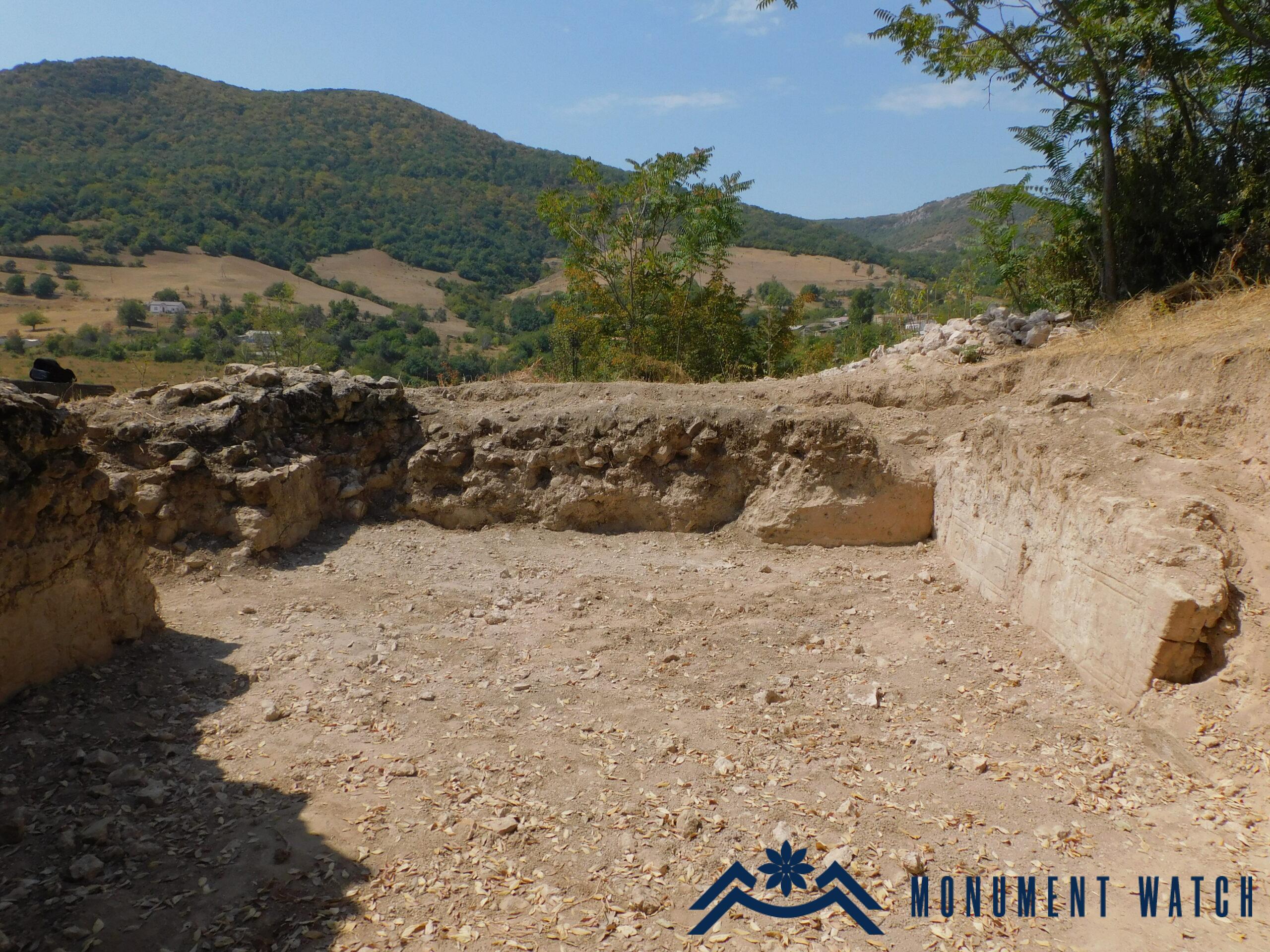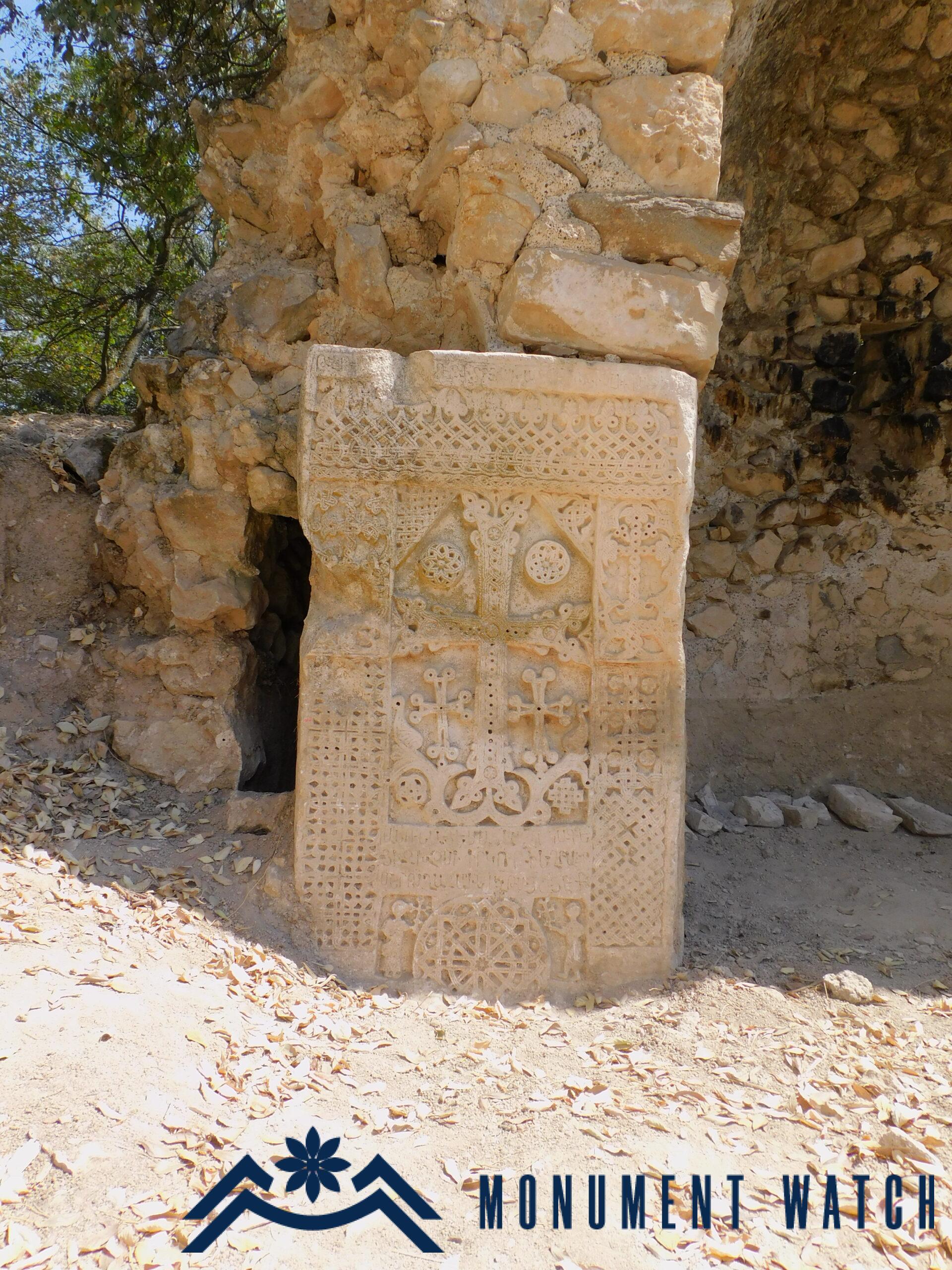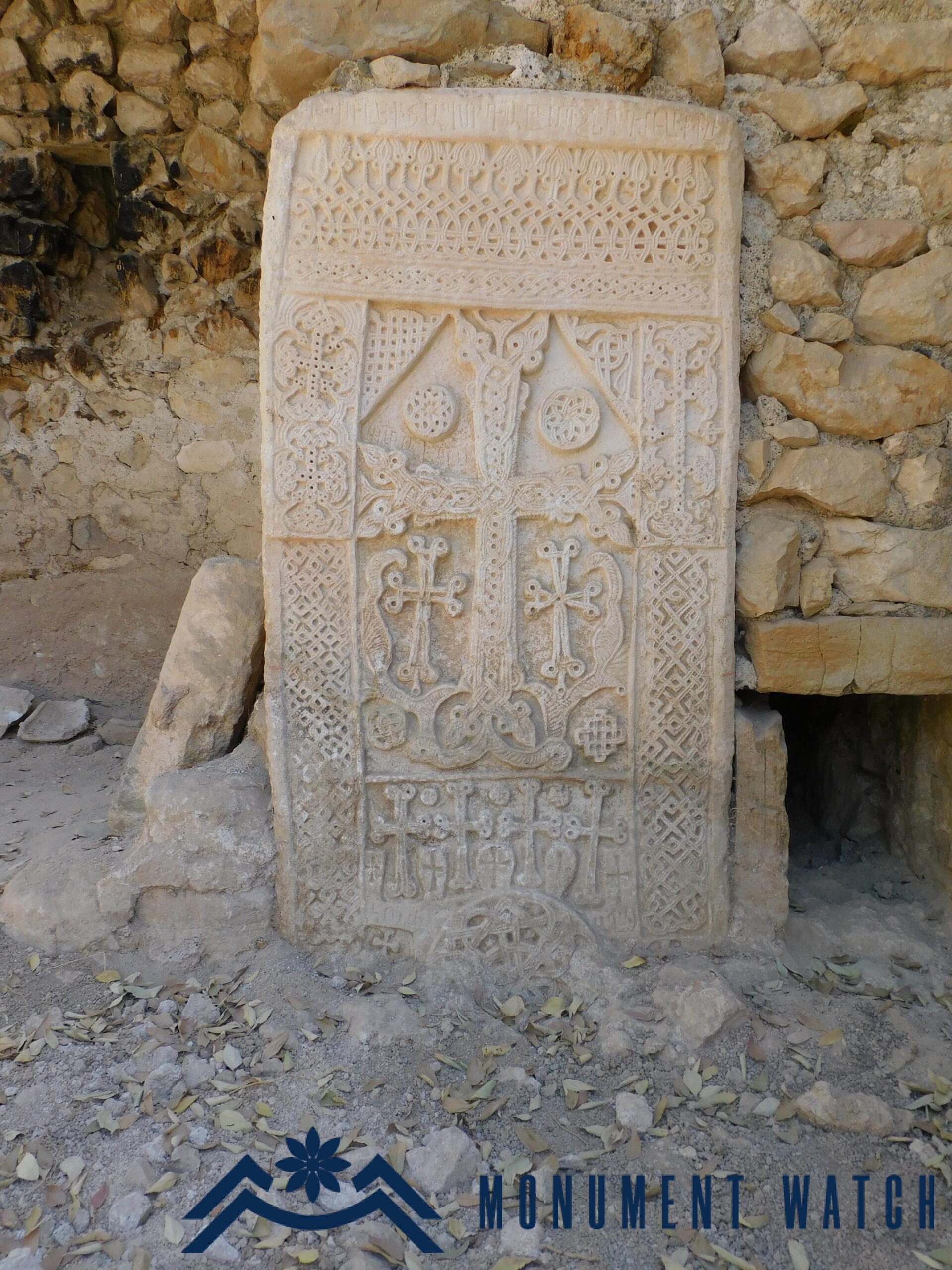The Karmir (Red) Church (Mausoleum of Melik Pashayans)
Location
Situated on the eastern periphery of Tsovategh village within the Martuni region, the Karmir Church complex, renowned alternatively as Melik Pashayans' mausoleum, occupies an elevated position atop a hill (Fig. 1).

Historical overview
In the 19th century, scholars verified the presence of a complex ensemble of structures at this site, encompassing a church, three subterranean tombs in its vicinity, and an extensive cemetery (Barkhudareants 1895, 106-108). “Graves can be found both within the chapels and the main church, with tombstones fashioned from solid black stones, devoid of any inscriptions or carvings” (Lalayan 1897, 49). “Towards the eastern fringes of the village, atop a modest hill, lies a cluster of closely situated graves. Amidst this burial ground stands a distinctive four-nave, arched church. Among these chambers, three are situated underground, while one partially emerges from the earth's surface, resembling an akeldama (graveyard). There is a multitude of graves, including the resting places of Melik Pasha and Bishop Sahak” (Jalayants 1858, 514).
Today, only the church and the cemetery have endured the test of time.
As indicated by an inscription etched onto a stone at the entrance of the church, its construction dates back to the year 1621. "The year 1621, Bishop David. This church monastery is a commemorative tribute, intended to serve as a tomb and final resting place for our forebears” (CAE 5, 160).
In the year 2022, excavations were conducted within the vicinity of the church, primarily to uncover chapel tombs. These endeavors did not yield the anticipated discovery, and no such tombs were unearthed.
The excavations yielded an array of findings, including fragments of khachkars spanning various epochs (Figs. 2, 3), inscription stones, and tombstones integrated into the church walls (Fig. 4). Furthermore, burials were uncovered at various locations within the church premises.
Architectural-compositional examination
The church is a single-nave vaulted hall with a semicircular tabernacle in the eastern part. Adjacent to the tabernacle on either side are the sacristies, notable for their diminutive entrances, their precise intended purpose remaining unknown. The entrance, positioned to the south, spans a length of 7.5 meters, a width of 5.5 meters, and a height of 4 meters. Certain lower sections of the walls have been retained (Fig. 5).
The church boasts a wealth of khachkars, several of which have managed to endure the passage of time and remain intact. Moreover, details about certain khachkars are derived from historical sources.
Adorning the northern expanse of the Tabernacle is an exquisitely carved khachkar, embellished with an inscription: "In 1576, during the patriarchate of Lord Hovhannes, and under the guidance of Melik Pasha, I, Bishop Sahak, raised this cross for the sake of God. May it serve as a salvation for the soul of my brother Ghazar. Remember him in your prayers"(Fig. 1982,160, Fig․6). In the southern part of the tabernacle, there is another khachkar bearing inscription "The year 1586, under the patriarchate of Ter David, under the guidance of Melik Pasha. Bishop Petros"(CAE 1982, 160, Fig․7).
Within the chapel, an exquisitely sculpted khachkar bore a finely crafted inscription: "In the year 1566, guided by the will of Almighty God, I, Melik Avan, raised this cross as a testament to the salvation of the souls of my father, Melik Pap, and my mother, Khondi Khatun. As you remember the Lord in your prayers, so shall God remember you in His prayers" (CAE 1982, 161). This particular khachkar, along with several others bearing inscriptions, has not managed to withstand the test of time. However, noteworthy are the 12th-13th-century khachkars adorned with intricate carvings that depict the deceased (Figs. 2, 3).
Extending in the vicinity of the church is a cemetery adorned with a collection of both ancient and contemporary tombstones.
The condition before, during, and after the war
The church presently stands in a state of ruin, marked by the complete collapse of its vault, with only a fragment of the tabernacle dome managing to survive.
In the wake of the excavations conducted in 2022, the soil covering the hall was meticulously cleared, facilitating the unearthing of certain sections of the still-standing walls. (Source:https://www.facebook.com/profile/100067818338897/search/q=%D5%AE%D5%B8%D5%BE%D5%A1%D5%BF%D5%A5%D5%B2).
The monument remained unscathed during the military operations of 2020.
Bibliography
- Barkhudareants 1895 - Barkhudareants M., Artsakh, Baku.
- CAE 5 - Corpus of Armenian Lithography, Issue 5, Artsakh/compiled by S. Barkhudaryan, Yerevan, 1982.
- Lalayan 1897 - Lalayan E., Varanda, Ethnographic Journal, No. 2.
- Mkrtchyan Sh., Historical and Architectural Monuments of Nagorno-Karabakh, Yerevan, 1980.
- Voskean H., Monasteries of Artsakh, Vienna, 1953.
- Jalalyants 1858 - Jalalyants S., Journey to Greater Armenia, Tiflis.
The Karmir (Red) Church (Mausoleum of Melik Pashayans)
Artsakh

